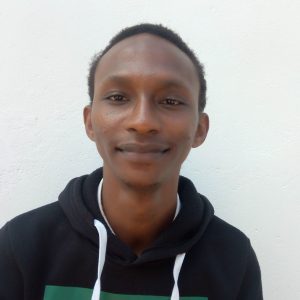The 700 community members living in Namwaya struggle daily to collect sufficient water to meet their needs. Although they have a water source that provides plenty of water, it is in disrepair, and its water quality can not be trusted.
"The spring was once constructed by the community, but with [the] lack of proper expertise, the spring was not constructed to [a safe] standard. It is in a bad state, open to contamination, and [it] poses a health risk," said field officer David Muthama.

"The spring has a lot of water escaping from the sides and bottom of the wing wall. Also, the discharge pipe is heavily rusted, further contaminating the water. Water can be seen getting into the spring box that finds its way to the supply pipe. Also, the stairs giving access to the drawing point are a big risk," David said.
When people rely on a water source such as this spring that is not providing water safely and efficiently, many other areas of their lives suffer because their time and energy are consumed with collecting water and suffering from water-related illnesses.
David continued, "With water scarcity being a persistent problem, community members, particularly women and children, are burdened with the task of fetching water daily. This essential chore often requires walking long distances to reach the nearest water source, such as a well or water point. As a consequence, significant time and energy are dedicated to this activity, leading to disruptions in their daily schedules."

"It is hard to maintain order in the spring when it looks like chaos. Look, there is water escaping from all over. Sometimes I have to work on the drainage alone just because I am the [land] owner, but I know things would be different if the spring looked [a] little bit nicer," said 59-year-old farmer and the spring's namesake Hudson Muganda Muchele, shown above near the spring.
Collecting water from the spring is especially difficult during the rainy season when the path and surrounding area become slick and muddy water flows into the spring, contaminating it further.

"Getting water during the rainy season is not easy. The water of the spring usually turns brown in color, and [I] have to use a sieve to draw water. On several occasions, I have forgotten my mother's [sieve] at the water point only to return and not find it," said 12-year-old Dinah B., shown above.
Proper spring protection will enable community members like Hudson and Dinah to quickly and safely collect water they won't have to filter before using. Then, with the extra time, they can focus their energy on improving their daily lives.
The Proposed Solution, Determined Together...
At The Water Project, everyone has a part in conversations and solutions. We operate in transparency, believing it benefits everyone. We expect reliability from one another as well as our water solutions. Everyone involved makes this possible through hard work and dedication.
In a joint discovery process, community members determine their most advantageous water solution alongside our technical experts. Read more specifics about this solution on the What We're Building tab of this project page. Then, community members lend their support by collecting needed construction materials (sometimes for months ahead of time!), providing labor alongside our artisans, sheltering and feeding the builders, and supplying additional resources.
Water Access for Everyone
This water project is one piece in a large puzzle. In Kenya, Sierra Leone, and Uganda, we're working toward complete coverage of reliable, maintained water sources that guarantee public access now and in the future within a 30-minute round trip for each community, household, school, and health center. One day, we hope to report that this has been achieved!
Training on Health, Hygiene & More
With the community's input, we've identified topics where training will increase positive health outcomes at personal, household, and community levels. We'll coordinate with them to find the best training date. Some examples of what we train communities on are:
- Improved hygiene, health, and sanitation habits
- Safe water handling, storage & treatment
- Disease prevention and proper handwashing
- Income-generation
- Community leadership, governance, & election of a water committee
- Operation and maintenance of the water point
Chlorine Dispensers
Installing chlorine dispensers is an important piece of our spring protection projects. Protecting a spring provides community members with an improved water source, but it doesn’t prevent contamination once the water is collected and stored. For example, if the water is clean and the container is dirty, the water will become contaminated.
We ensure that each chlorine dispenser is filled with diluted chlorine on a consistent schedule so that people can add pre-measured drops to each container of water they collect. That way, community members can feel even more confident in the quality of their water.

 Protected Spring
Protected Spring
 Rehabilitation Project
Rehabilitation Project





























